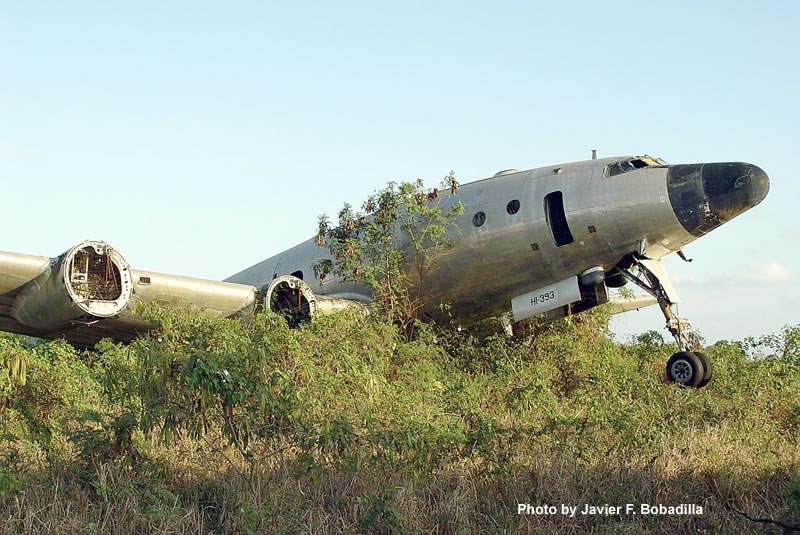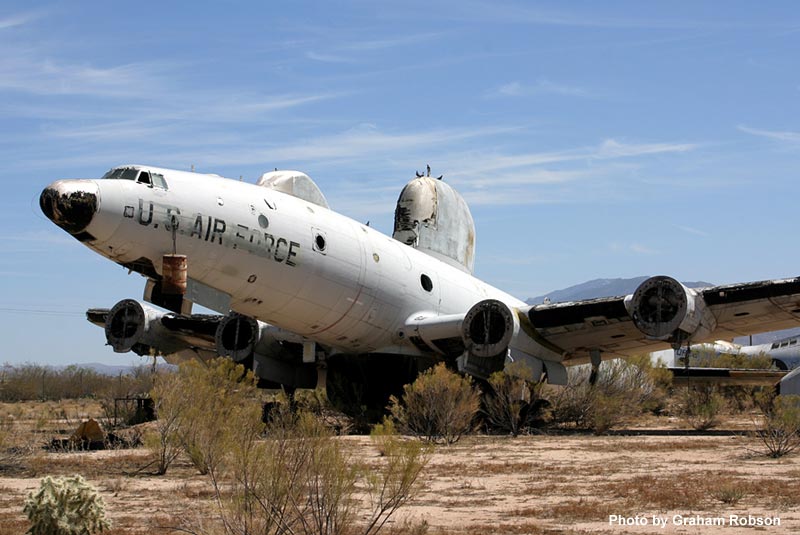Le pido perdón a su reverendísima por el error cometido tratare de no hacerlo de vueltaLos aviones de esta fotografía no son B 29, son CONSOLIDATED B 32 DOMINATOR.
Te comento que en tu serie de fotografías n° 1556 hay varias subidas anteriormente, en las páginas 75 y 76 de este hilo. Gracias por tu comprensión y humildemente suplico vtra. indulgencia...!!!
Estás usando un navegador obsoleto. No se pueden mostrar estos u otros sitios web correctamente.
Se debe actualizar o usar un navegador alternativo.
Se debe actualizar o usar un navegador alternativo.
Aeronaves Abandonadas
- Tema iniciado soyelmejor
- Fecha de inicio
B-24 ‘Lady Be Good’ – Crashed on it’s first and last mission in 1943, discovered in 1958
http://www.warhistoryonline.com/wp-content/uploads/2015/04/‘Lady-Be-Good’-–-a-tale-of-courage-and-resilience-from-the-Second-World-War-640x434.jpg
The wreckage of a USAAF (United States Army Air Forces) plane that went missing during its first and last mission in the Second World War was discovered in a North African desert. In early November 1958, an oil exploration team from Britain was flying over the Libyan desert, when they unexpectedly spotted the wreckage of a plane in the middle of the desert.
A ground team was quickly dispatched to the crash site in order to investigate the wreckage. It was later revealed that it was the wreckage of a ‘B-24D Liberator’ from the Second World War, also known as the ‘Lady Be Good’. The plane flew for the first time on a bombing mission in Italy in 1943 and lost radio contact shortly after entering a sandstorm.
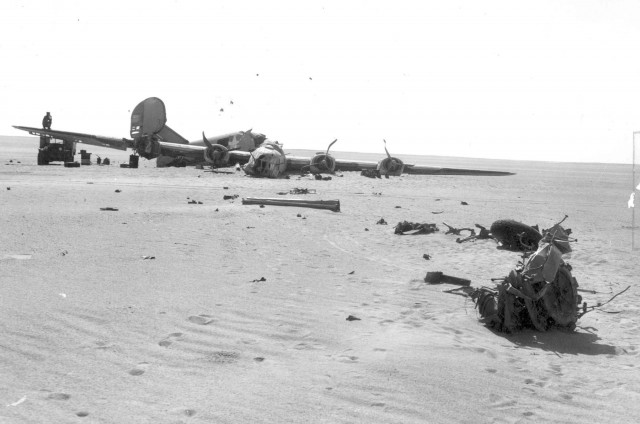
The USAAF launched a search and ultimately concluded that the plane had crashed into the Mediterranean Sea, after experiencing a malfunction or possibly disorientation. The ground search team that approached the plane started looking into its condition. To everyone’s astonishment, ‘Lady Be Good’ was in surprisingly good condition; its radio was in working condition, along with one of the engines and a 50-calibre machine gun, which could still fire. There were water containers still intact inside the plane. There were no signs of the remains of the crew who were on board ‘Lady Be Good’.
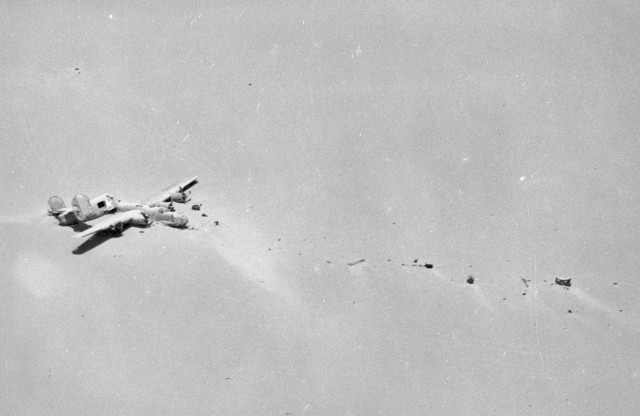 The wreckage of the Lady Be Good in 1958. [Via]
The wreckage of the Lady Be Good in 1958. [Via]
http://www.warhistoryonline.com/wp-content/uploads/2015/04/‘Lady-Be-Good’-–-a-tale-of-courage-and-resilience-from-the-Second-World-War-640x434.jpg
The wreckage of a USAAF (United States Army Air Forces) plane that went missing during its first and last mission in the Second World War was discovered in a North African desert. In early November 1958, an oil exploration team from Britain was flying over the Libyan desert, when they unexpectedly spotted the wreckage of a plane in the middle of the desert.
A ground team was quickly dispatched to the crash site in order to investigate the wreckage. It was later revealed that it was the wreckage of a ‘B-24D Liberator’ from the Second World War, also known as the ‘Lady Be Good’. The plane flew for the first time on a bombing mission in Italy in 1943 and lost radio contact shortly after entering a sandstorm.

The USAAF launched a search and ultimately concluded that the plane had crashed into the Mediterranean Sea, after experiencing a malfunction or possibly disorientation. The ground search team that approached the plane started looking into its condition. To everyone’s astonishment, ‘Lady Be Good’ was in surprisingly good condition; its radio was in working condition, along with one of the engines and a 50-calibre machine gun, which could still fire. There were water containers still intact inside the plane. There were no signs of the remains of the crew who were on board ‘Lady Be Good’.
 The wreckage of the Lady Be Good in 1958. [Via]
The wreckage of the Lady Be Good in 1958. [Via]Con lo que salen y lo escasos que son esos motores a nadie se le ocurrió llevárselos?
OFF TOPIC
2010: SBD-2 Dauntless Recovered from Lake Michigan

It isn’t unusual to find man-made debris littering lake beds, like rusting supermarket trolleys and even old cars. But every now and then the murky deep turns up a truly awesome find, such as a Second World War fighter bomber. Take this former U.S. Marine Corps Douglas SBD-2 Dauntless, for instance.
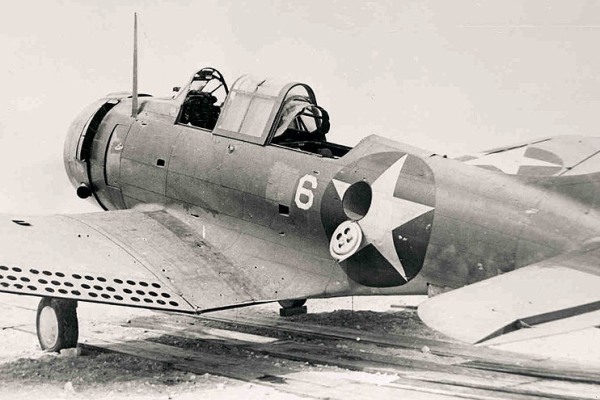
This particular SBD-2 Dauntless (Build Number 2106) rolled off the assembly line in El Segundo, California, in December 1940 to take up active duty at Naval Air Station San Diego. It served with various units during the War in the Pacific, used primarily against Japanese shipping in a bid to send the mighty fleet on a watery course for the ocean floor.
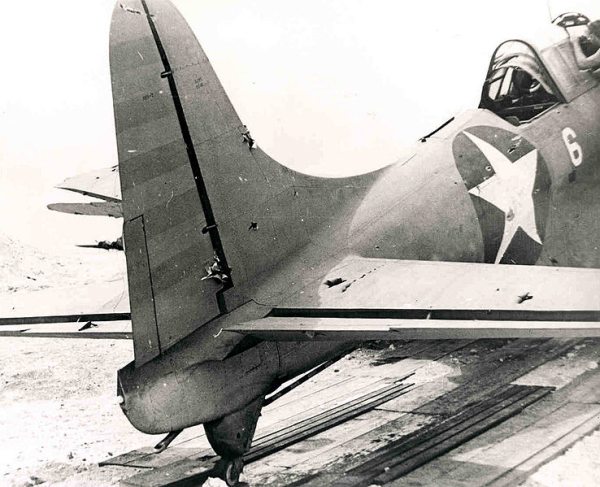
The aircraft’s first major repair came after an unsuccessful raid against Japanese aircraft carriers in June 1942, west of Midway Atoll. Enemy fire riddled the Dauntless with 219 bullet holes, and of 16 aircraft that took part in the raid, Dauntless 2106 was one of only eight to return. The plane was returned to the United States and repaired, eventually assigned to the Carrier Qualification Training Unit at NAS Glenview, Illinois. (Discover more about the now abandoned airfield on Midway Atoll here.)
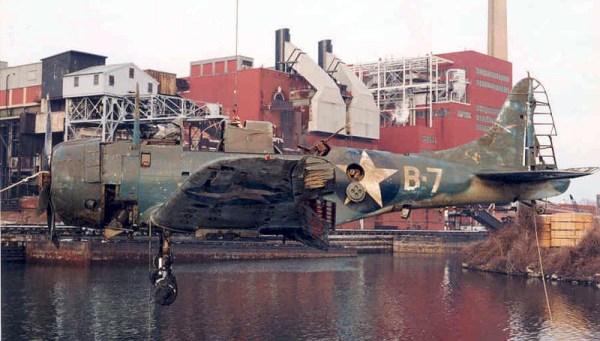
The last flight of Dauntless 2106 came one morning in June 1943, when a student pilot ditched itin Lake Michigan after straying from the correct landing approach to the training carrier, USS Sable. Battered but not completely broken, the Dauntless rested on the floor of Lake Michigan for more than half a century before a team trawling the depths for the wreck finally raised it in 1994. The risky business of training fledgling aviators to land on a floating, pitching, rolling deck means the lake bed is a veritable aircraft graveyard.
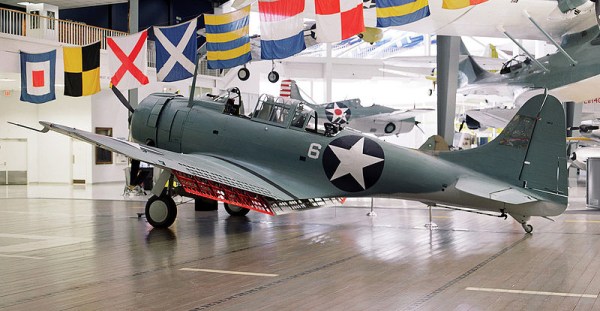
The Dauntless was in remarkable condition when it was pulled from the lake, considering it was essentially crashed into the water. Not only was the propellor still intact, it was still straight, begging the question of what other wooden wonders lie silent and undiscovered beneath the surface of the Great Lakes. Thankfully, there’ll be no more crashing for this aircraft. It was restored at the U.S. National Museum of Naval Aviation at Pensacola, Florida, and displayed to the public in 2001. Its original paint scheme is still partially visible on its wings and tail.
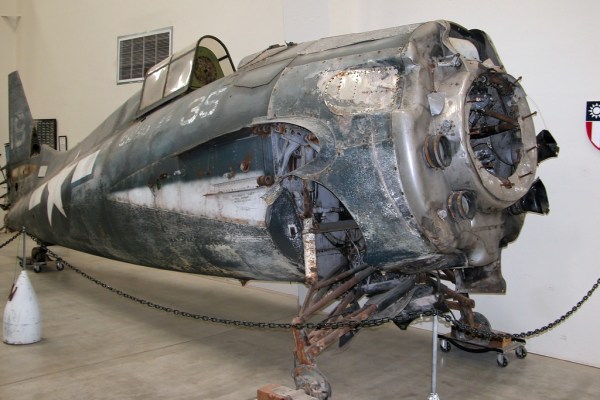
(Image licensed under Creative Commons Attribution 2.0 Generic)
Here’s another watery wreck, this time at the Pima Air and Space Museum in Arizona, a restoration after decades at the bottom of a lake. Once again, barring the obvious parts missing, the fuselage overall appears in good condition. So while a waterlogged engine and hydraulic systems is never a good thing, the lake has kept the scrapman at bay and, as the Dauntless above proves, a cosmetic clean-up is not beyond the bounds of economic possibility. via www.warhistoryonline.com
restoration after decades at the bottom of a lake. Once again, barring the obvious parts missing, the fuselage overall appears in good condition. So while a waterlogged engine and hydraulic systems is never a good thing, the lake has kept the scrapman at bay and, as the Dauntless above proves, a cosmetic clean-up is not beyond the bounds of economic possibility. via www.warhistoryonline.com
2010: SBD-2 Dauntless Recovered from Lake Michigan

It isn’t unusual to find man-made debris littering lake beds, like rusting supermarket trolleys and even old cars. But every now and then the murky deep turns up a truly awesome find, such as a Second World War fighter bomber. Take this former U.S. Marine Corps Douglas SBD-2 Dauntless, for instance.

This particular SBD-2 Dauntless (Build Number 2106) rolled off the assembly line in El Segundo, California, in December 1940 to take up active duty at Naval Air Station San Diego. It served with various units during the War in the Pacific, used primarily against Japanese shipping in a bid to send the mighty fleet on a watery course for the ocean floor.

The aircraft’s first major repair came after an unsuccessful raid against Japanese aircraft carriers in June 1942, west of Midway Atoll. Enemy fire riddled the Dauntless with 219 bullet holes, and of 16 aircraft that took part in the raid, Dauntless 2106 was one of only eight to return. The plane was returned to the United States and repaired, eventually assigned to the Carrier Qualification Training Unit at NAS Glenview, Illinois. (Discover more about the now abandoned airfield on Midway Atoll here.)

The last flight of Dauntless 2106 came one morning in June 1943, when a student pilot ditched itin Lake Michigan after straying from the correct landing approach to the training carrier, USS Sable. Battered but not completely broken, the Dauntless rested on the floor of Lake Michigan for more than half a century before a team trawling the depths for the wreck finally raised it in 1994. The risky business of training fledgling aviators to land on a floating, pitching, rolling deck means the lake bed is a veritable aircraft graveyard.

The Dauntless was in remarkable condition when it was pulled from the lake, considering it was essentially crashed into the water. Not only was the propellor still intact, it was still straight, begging the question of what other wooden wonders lie silent and undiscovered beneath the surface of the Great Lakes. Thankfully, there’ll be no more crashing for this aircraft. It was restored at the U.S. National Museum of Naval Aviation at Pensacola, Florida, and displayed to the public in 2001. Its original paint scheme is still partially visible on its wings and tail.

(Image licensed under Creative Commons Attribution 2.0 Generic)
Here’s another watery wreck, this time at the Pima Air and Space Museum in Arizona, a
 restoration after decades at the bottom of a lake. Once again, barring the obvious parts missing, the fuselage overall appears in good condition. So while a waterlogged engine and hydraulic systems is never a good thing, the lake has kept the scrapman at bay and, as the Dauntless above proves, a cosmetic clean-up is not beyond the bounds of economic possibility. via www.warhistoryonline.com
restoration after decades at the bottom of a lake. Once again, barring the obvious parts missing, the fuselage overall appears in good condition. So while a waterlogged engine and hydraulic systems is never a good thing, the lake has kept the scrapman at bay and, as the Dauntless above proves, a cosmetic clean-up is not beyond the bounds of economic possibility. via www.warhistoryonline.comTemas similares
- Respuestas
- 251
- Visitas
- 98K
- Respuestas
- 7
- Visitas
- 2K
- Respuestas
- 27
- Visitas
- 4K
- Respuestas
- 133
- Visitas
- 34K

 ... Casas mas casas menos como dijo un santiagueño luego de visitar NYC igualito a mi Santiago
... Casas mas casas menos como dijo un santiagueño luego de visitar NYC igualito a mi Santiago 

















